From glistening lakes to old Roman cities and islands surrounded by white sand beaches, Croatia is where I live and spend many weeks a year on vacation. Croatia is no doubt one of the top holiday destinations in Europe, so, are 4 days in Croatia enough? And, what is the ideal 4-day itinerary in Croatia?
Let me answer those questions and more in my ultimate guide to planning a quick trip to the place I call home!
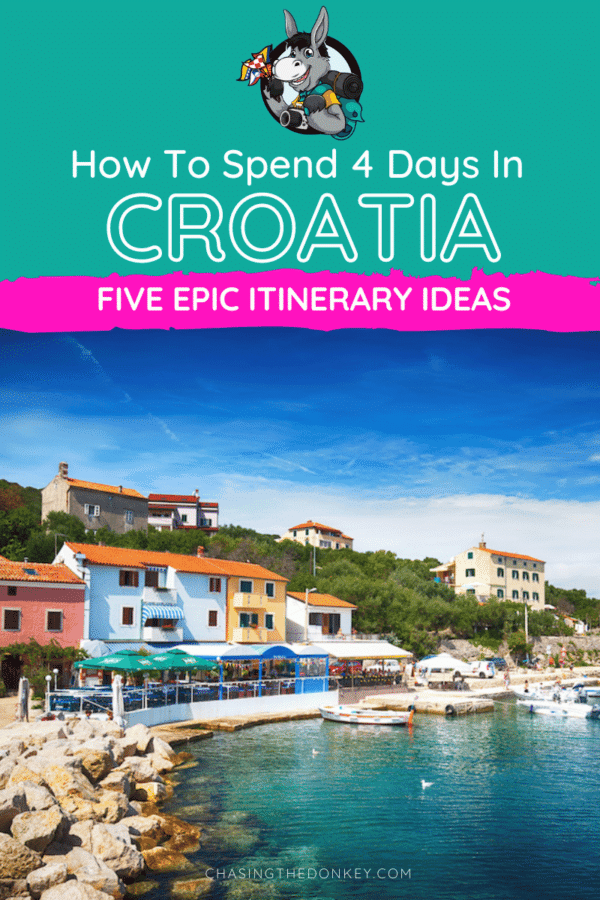
It might be a little tight as four days is not a long time, but you can do a surprising amount if you’ve only got four days in Croatia. I have prepared a few itineraries tailored to those who want to be in nature, see the country’s major cities, go partying, visit famous historical monuments, or stay along the coast!
They all come with lashings of ice cream and sunshine, so grab your bathing suit and get ready to explore the Adriatic Coast and beyond.
Skip Ahead To My Advice Here!
Option 1 – City Hopping Itinerary: Zagreb, Zadar, And Split
Start your perfect trip in Zagreb, Croatia’s capital
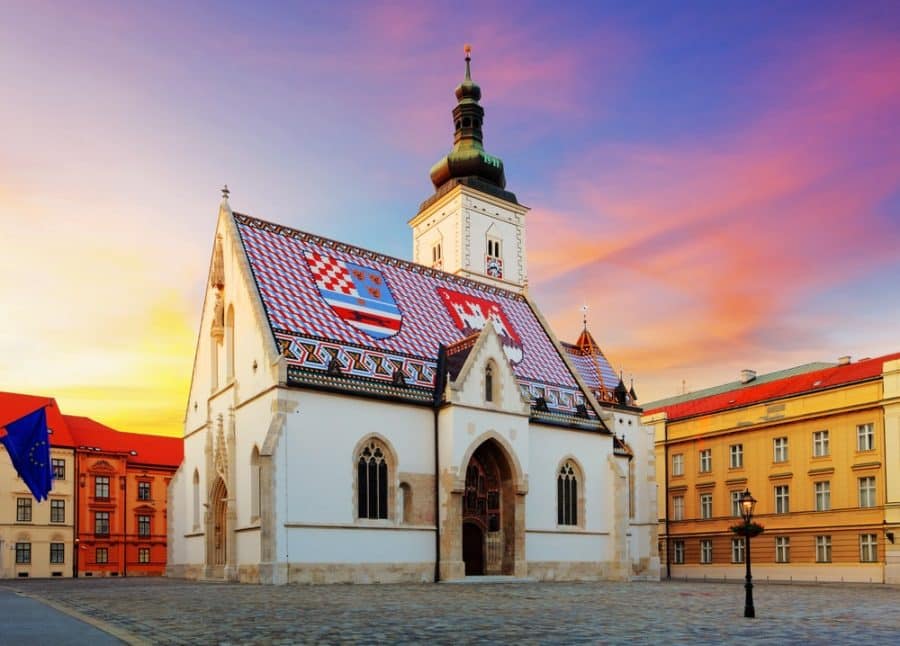
It’s not the most popular destination on the map, but I find the small city buzz and laid-back atmosphere enchanting.
Get lost strolling in the city center, then stop and read your book at a cafe at Cvjetni Trg (Flower Square) in the morning, then spend the afternoon wandering up the Strossmayer promenade and along the old medieval city walls up to the Upper Town where you’ll be spoilt with the best city views.
Then there is the cute open-air farmers market, Dolac Market in the lower town that’s fun to muse around on a sunny day, after which you can end up at Zagreb’s main square – Trg bana Jelačića for drinks.
Next, make your way to Zadar, which is just under 4 hours drive away and where I live!
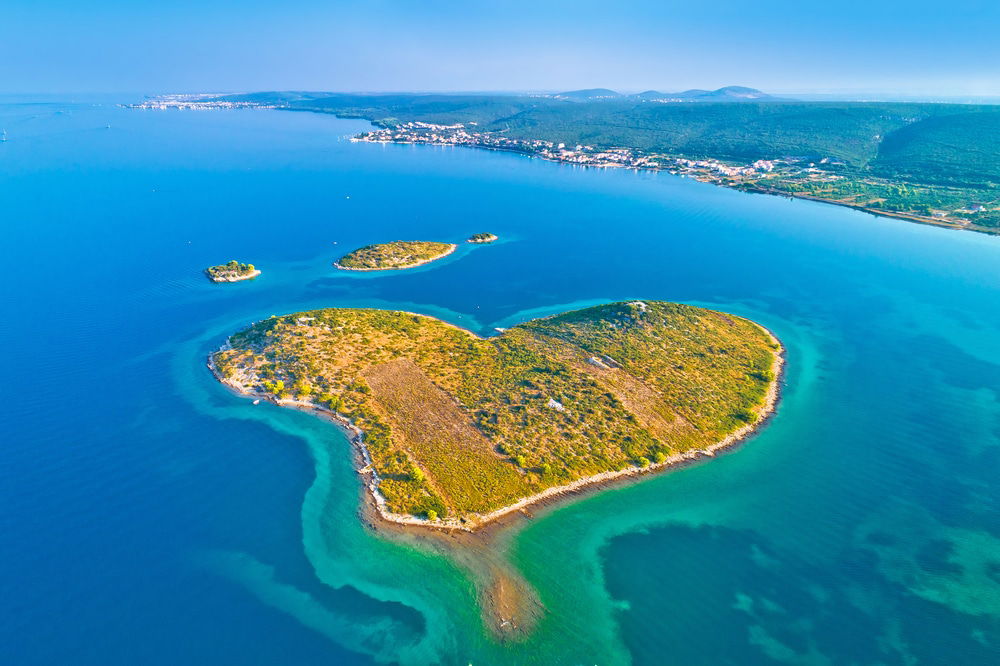
Of all the big cities along the Dalmatian Coast, Zadar is usually people’s last choice. But it’s for this reason that it’s one of my favorites – it offers Roman ruins, glistening waters, and nearby island hopping without the crowds!
It’s also positioned at the foot of the Velebit Mountains, so there are many hiking trails around the city.
As you walk around town, you’ll discover Byzantine churches, Romanesque cathedrals, and the remains of the city’s Roman-era.
One thing to bear in mind is that there aren’t any sandy beaches in the city. The water’s edge meets a promenade that you can jump off, but there’s no sand in sight.
At the end of the promenade, there’s a Sea Organ and a Sun Salutation. It is always a good idea to come at sunset when the sea lights up in orange and red hues, and the Sea Organ whistles melodies into the cool breeze. Once the sun goes down, the Sun Salutation dances into life, turning the night sky into a colorful light show.
Next up, Split! – Croatia’s Second-largest City
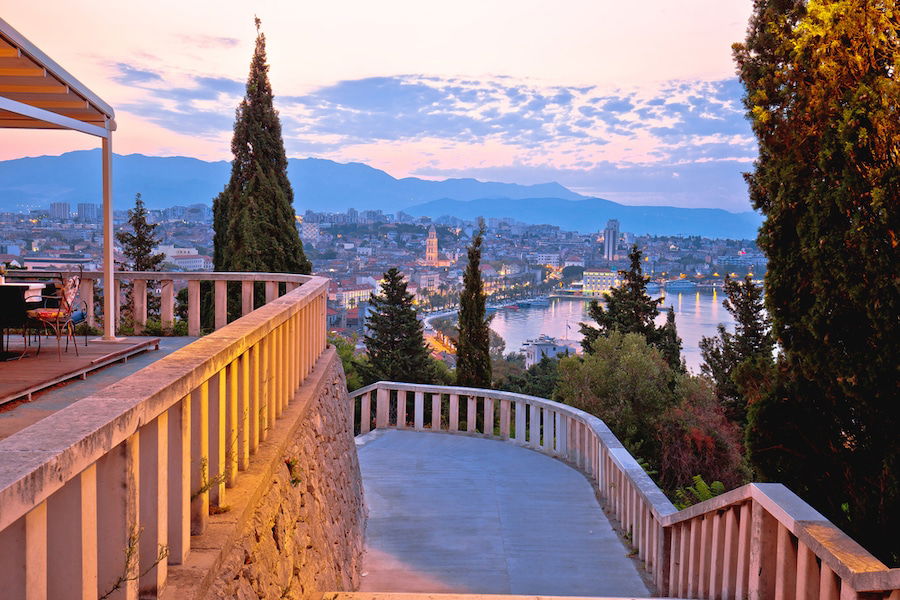
Far from being off the tourist map, Split is full of lively travelers and friendly locals. The most iconic landmark is the Diocletian’s Palace, which was once a 4th-century Roman city but is now a maze of narrow streets lined with cafes and restaurants built amongst Roman ruins.
If you’re in Croatia to discover the culture, then stand outside the Vestibule and listen out for the Klapa singers.
Take a walk along the city’s seafront and it won’t be long before you come to a white sand beach. Even close to shore, the snorkeling is great. Dive under and you’ll catch glimpses of starfish, sea cucumbers, and sea anemones.
Because Split has so much to see I’d recommend staying here for two days and maybe catching a boat to one of the nearby islands, like Brač, Hvar, or Vis on the second day if you feel like you’ve seen enough of the city.
Brands We Use And Trust
Option 2 – The South Coast: Dubrovnik, Lokrum Island, And Korcula Island
Start your adventure in Croatia’s famous walled city, Dubrovnik
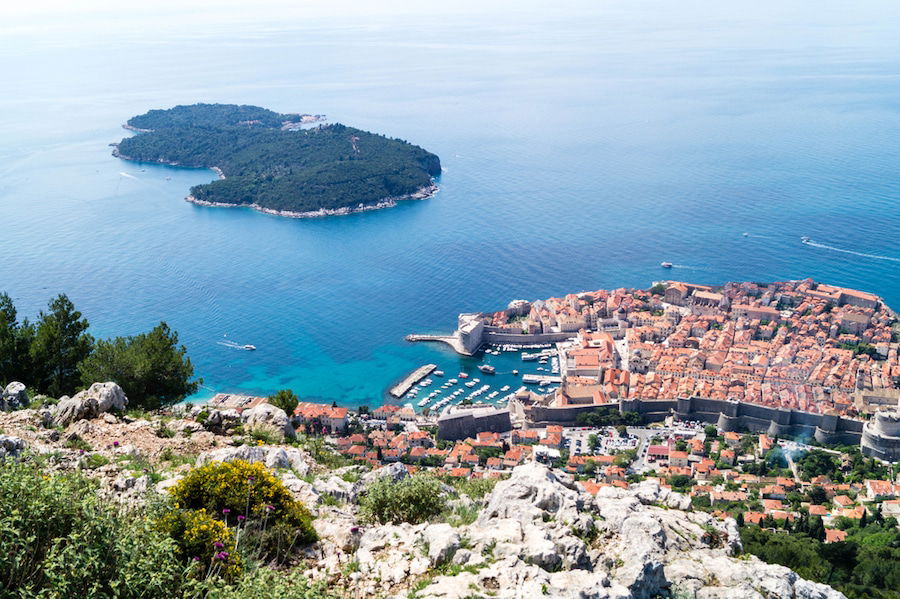
Dubrovnik is a fortified coastal city that has beautiful beaches, bucketloads of history, and a network of nearby islands. Dating as far back as the 7th century, there’s a range of architectural styles throughout the city.
The old city wall is a UNESCO World Heritage Site that is home to chic cafes, historical monuments, and great restaurants. It’s worth spending a few hours strolling along the wall and stopping for food and drinks along the way.
Did you know the original old town walls were built to protect and surround the 9th-century city? Pieces of which still stand today, and later further defenses were added, such as those done in the 15th century to protect the city from Turkish invasions.
It’s best to do the circular walk atop the city walls early in the morning or just before closing to avoid the summer heat and the crowds.
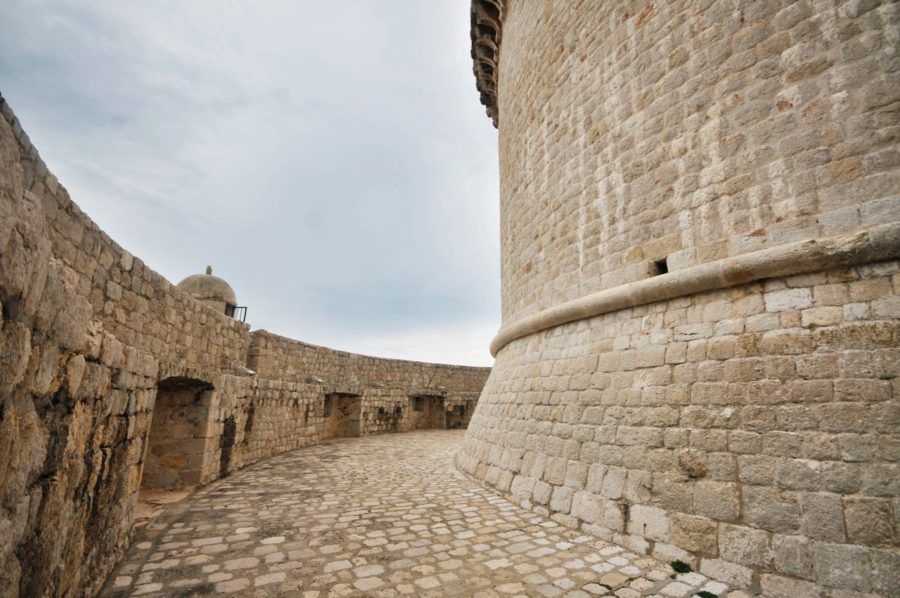
Aside from being an architectural gem, the city is also a cultural hotspot. Throughout July and August, the Dubrovnik Summer Festival brings the town to life with music, performances, and a true Croatian party spirit.
If you want to get out of the city in the late afternoon and do some exploring, catch the cable car up to Mount Srd – the views of the city and the sea below are spectacular!
Take the short 15-minute ferry ride from the city to Lokrum Island on your second day
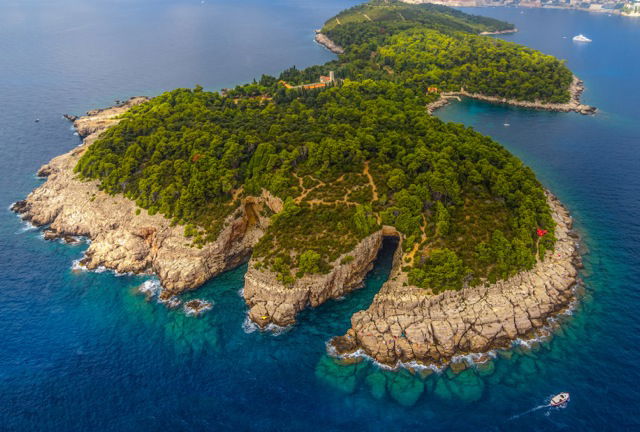
There are about 1,000 uninhabited islands in the Adriatic, and Lokrum is one of them. That said, there’s still plenty to keep you busy.
There’s a nudist beach on the island where you can soak in the summer sun, the ruins of a Benedictine Monastery you can walk to, and incredible snorkeling offshore.
If you’re not up for a beach day, the best location for you would be to find the hiking paths along the island’s rocky cliffs and get lost exploring, or go to the Botanical Gardens with more than 800 species of exotic plants.
While you’re on Lokrum, keep an eye out for the island’s unexpected inhabitants, the free-roaming peacocks, and rabbits first brought over by Maximilian from the Canary Islands, which are often found near the building housing the Game of Thrones chair!

Lastly, visit Fort Royal, which sits on the highest point of this little island. It dates back to 1806 and was built by the French army.
Once you’ve seen all the island’s landmarks and soaked in the views of Dubrovnik and the Adriatic Sea from various points on Lokrum, head back to the city for a dinner of fresh fish and a well-deserved glass of wine.
On the third day, pack your bags and catch a ferry to Korcula Island
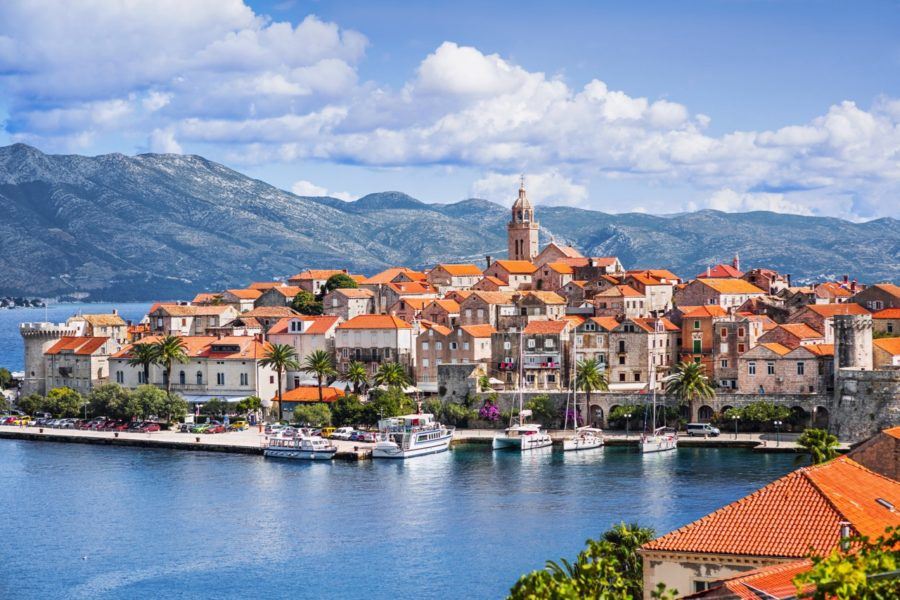
The time I visited Korcula was among my most memorable boat trip days in Croatia. Nicknamed “mini Dubrovnik,” the island offers the best of Dubrovnik without the overwhelming number of tourists.
Legend also has it it’s the birthplace of Marco Polo! But I go there for the winetasting options myself…
Spend a night here to really soak in the laid-back atmosphere of Croatian island life.
Option 3 – If You’re Here To Party: Split & Hvar
Start your party in Split!
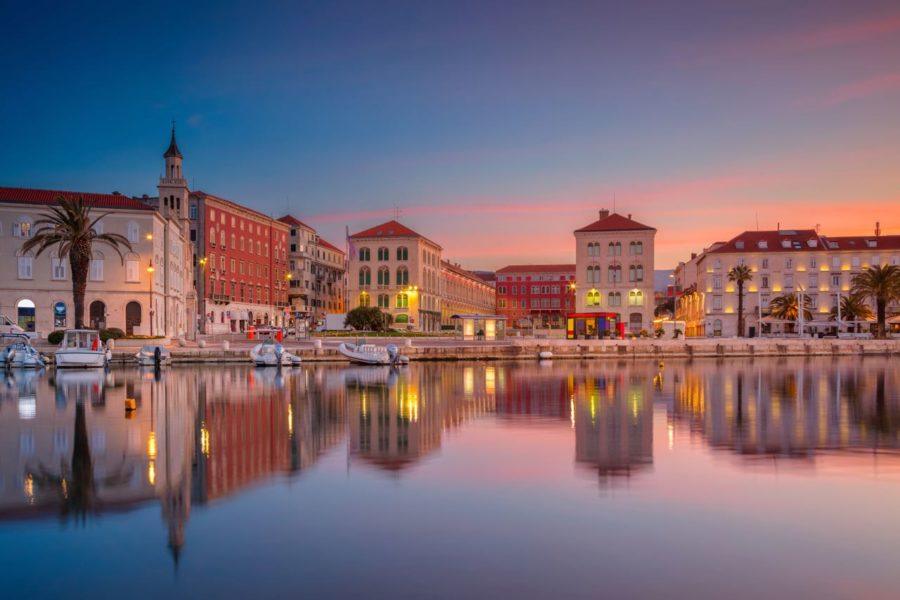
No one parties like the Croatians and this Split and the island of Hvar itinerary will prove it to you.
Start your night off in Split with a stroll along the promenade in the Riva neighborhood, with as many stops at bars along the way as you can handle, and a walk through the old town where you’ll often find outdoor concerts in full swing.
Next, make your way to one of the city’s best nightclubs. It’s not worth getting to a club before midnight in Croatia because people eat later and are slow to make their way out. But don’t worry; the clubs don’t close till well into the morning hours anyway, so you’ll have plenty of time to dance.
There are many clubs to choose from, but check out Mandrach Night Club, Central Club, Vanilla Club, JnBOX Bar, Klub Kocka, and Judino Drvo Club for the best nightlife experience.
Spend two nights in Split, so you get a chance to sleep in on the second day and explore the city before heading back out again.
The following day, have a bloody mary to help with the hangover and make your way to Hvar
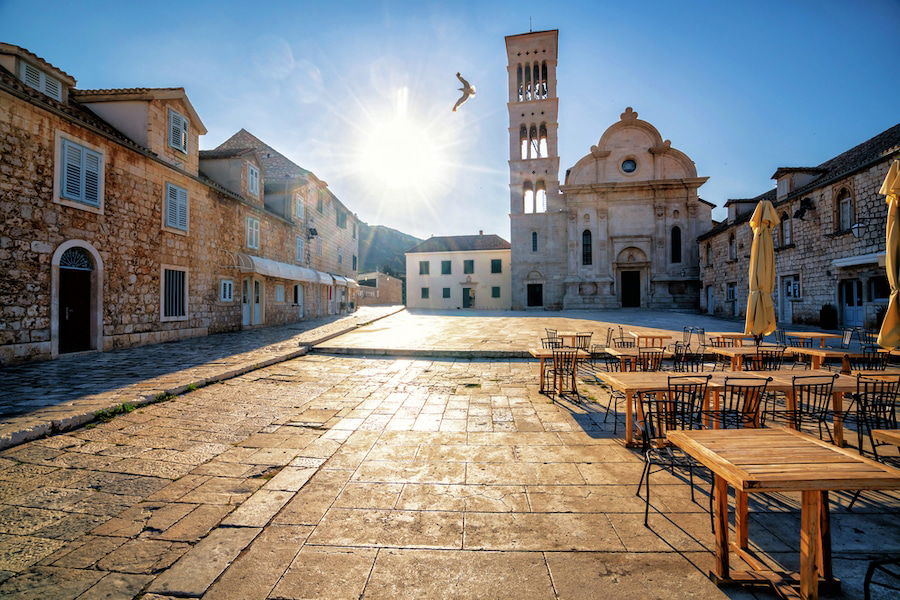
It’s worth spending two days here. If you’re on the island to party, stay in Hvar Town. It’s the biggest and busiest of the island’s towns, so you’re guaranteed the best atmosphere.
The most famous clubs on the island include Carpe Diem, Splash, Hula Hula Beach Bar, and Falko Beach Bar.
Between the partying, it’s worth visiting the main historical sites, like the Stari Grad plains, a UNESCO World Heritage Site, the Hvar theatre, which was constructed in 1612, and the Spanjola Fortress.
Option 4 – A National Park Tour Of Croatia: Krka & Plitvice
Start your outdoor exploration at Plitvice National Park

As I’m a big fan of the outdoors, this would likely be my top pick for a Croatia 4-day Tour.
Famous as the Plitvice Lakes are, there’s not really much around them. I once stayed in a small nearby village, but I’d recommend staying in Zadar instead and traveling from there to Plitvice and traveling from there to Krka.
From Zadar, it’s just an hour and a half drive to Plitvice and an hour to Krka, so it’s the perfect city to stay in during your national park tour of Croatia.
Once you arrive at Plitvice, you’ll soon get lost in a twisting maze of stunning lakes that reflect the surrounding pine forests.
The best seasons to go are spring and autumn, when it’s not too hot, so you can pleasantly hike throughout the day, and there aren’t as many travelers around. In high season this place is overrun, and it is not at all enjoyable.
While in Plitvice, I recommend taking a boat ride onto the lake to submerge yourself in the landscape.
The next day relax and explore Zadar
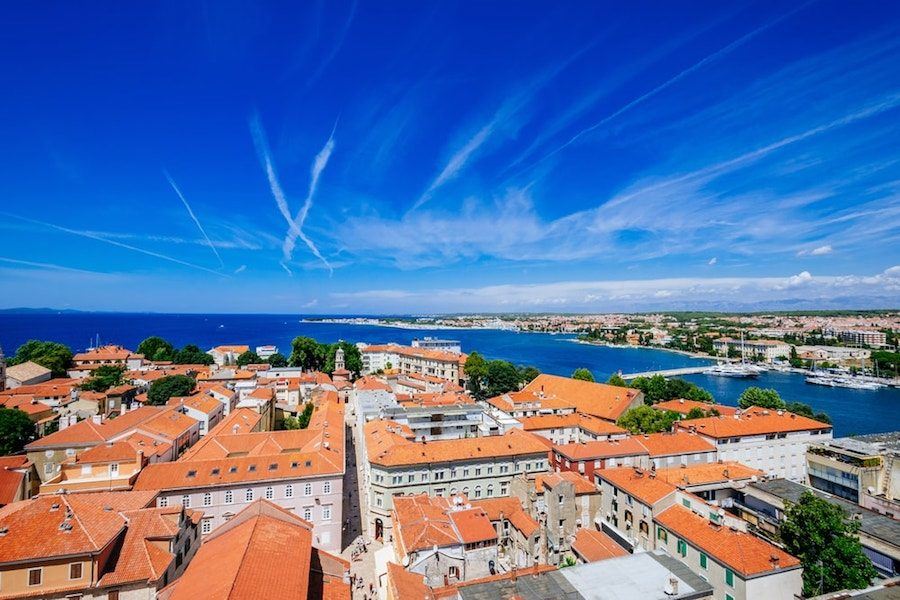
Check out Old Town, try some of the local seafood dishes, and get a good night’s rest so you’re ready for Krka the next day.
Finally, adventure on to Krka National Park
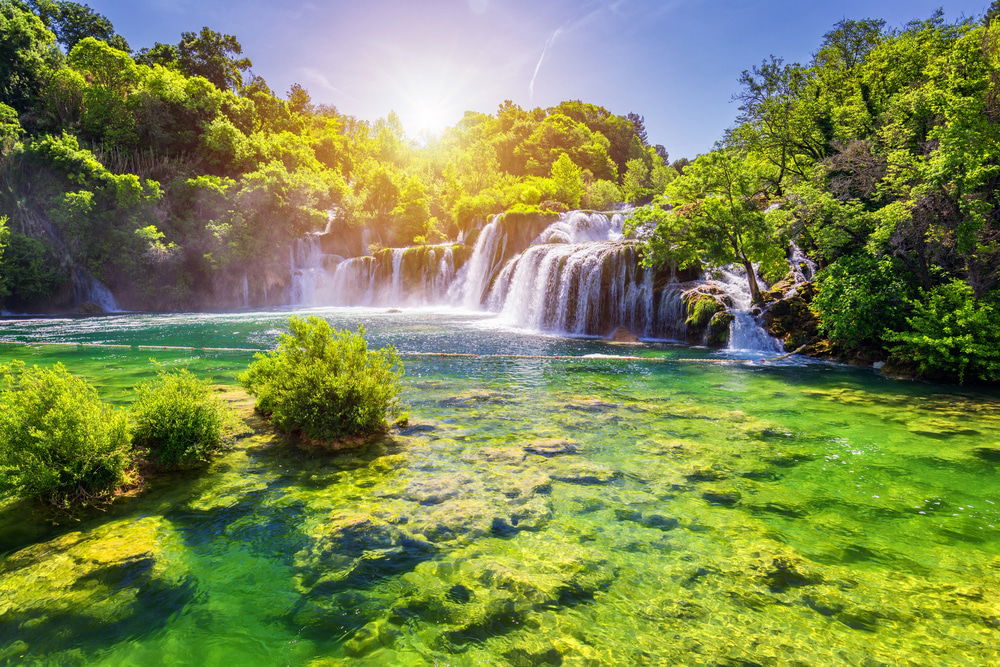
Krka National Park is known for its clear-blue waterfalls and gorgeous natural swimming pools. It doesn’t have the raw natural feel of Plitvice, but it is smaller and easier to navigate if you are short on time, that’s a huge advantage!
Another thing Krka can offer that Plitvice can’t is a historic center. There are the old ruins of a Roman military camp and amphitheater, two monasteries (one of which is built on ancient catacombs), and old water mills within the boundaries of the national park.
Option 5 – An Itinerary For History Buffs: Šibenik, Trogir Old Town, & Split
Start your 4-day Croatia trip in the town of Šibenik
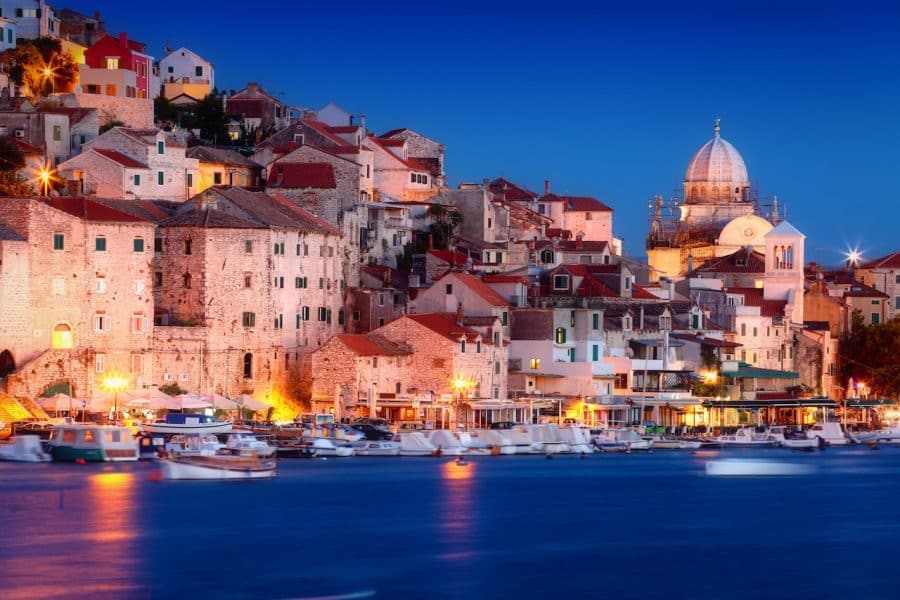
If you’re in Croatia to explore the country’s rich history and heritage, start on the north coast and slowly make your way down to Split in the central Dalmatian region.
Start your 4-day Croatia trip in Sibenik, a charming coastal town in the north of the country that has somehow fallen off the tourist radar.
The city has two historical landmarks worth visiting: the Saint James Cathedral, which has 71 faces in a range of comical expressions carved into its facade, and the St Nicholas Fortress, built when the Venetians occupied Croatia. It’s on a little island but connected to the mainland by a short walkway so that you can get there easily.
The next day, make your way to Trogir
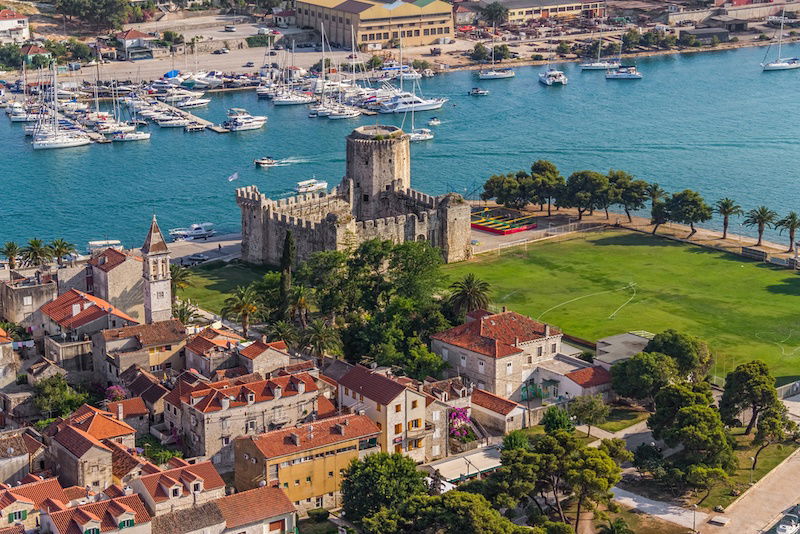
The city’s historical old town sits on a little island just offshore and is connected to the mainland by a bridge.
Cobbled streets lead you past churches and through narrow medieval buildings and streets that have withstood the test of time.
The best way to explore the old town is really to wander around and get lost, but there are a few landmarks you should watch out for along the way, like the Cathedral of St Lovro.
You can stay a night in Trogir’s old town or spend the day there and go to Split nearby that evening.
Finally, a 2-day exploration of Split

I’d recommend spending your last two days in Split as there’s so much to do there. You can catch your breath on the first day and enjoy the city’s beaches, then visit the Diocletian’s Palace, which was once a 4th-century Roman city, the next.
What are the must-visit destinations in Croatia for a four-day trip?
You won’t be able to do it all in four days, but I’d say overall, the must-visit destinations in Croatia are Dubrovnik, the Plitvice National Park, Split, Korcula, and Hvar.
So pick one of these destinations that suits what you want to be doing, whether that be lazing on the beach, on a nature trips, or partying, and then explore the area around your top destination.
How should I divide my time between different cities or regions?
Most cities can be explored in a day and a night in Croatia as even the most popular cities aren’t too big. But you will need to decide whether you want to spend your time along the Northern, Central, or Southern Dalmatian Coast.
The most famous destinations along the Dalmatian Coast include Zadar (in the north), Split and the islands of Brač (in central Dalmatia), and Dubrovnik and the island of Korčula (in southern Dalmatia).
The capital, Zagreb, is further inland and is best combined with a trip to the North or Central Dalmatian coast.
Pick one area of the Dalmatian coast to make the most of your short 4 day holiday. Otherwise, you’ll waste much of your holiday time traveling between different regions.
What are the best attractions and landmarks to see in Croatia? And, what are the recommended activities and experiences in Croatia within a limited time frame?
Amongst Croatia’s top attractions and landmarks are the Plitvice Lakes, Krka National Park, Trigor Old Town, St James Cathedral in Sibenik, and Dubrovnik’s medieval walls.
Suppose you’ve got a limited amount of time. In that case, I’d recommend prioritizing Dubrovnik, Split, the Plitvice Lakes, and a trip to one island (for example, Hvar is close to Split or Lokrum, which is uninhabited and sits just 15 15-minute boat ride away from Dubrovnik).
How can I optimize my itinerary to cover the highlights of Croatia in just four days?
Seeing all of Croatia’s top attractions in 4 days is impossible, so I’d recommend considering your main reason for being in the country. Are you looking for a beach holiday or to be in nature? Do you want to party or visit UNESCO World Heritage Sites?
From there, optimize your trip by picking a big city that meets most of your needs and is close to as many spots of interest as possible. That way, you’ll have a base point you can travel to and from.
The five itineraries discussed below are tailored to different interests and made to be realistic, accommodating plenty of relaxation time and ensuring you see as much as you can!
Is it possible to visit both the coast and the inland regions in four days?
When you wonder where to visit Croatia for four days, you might find yourself torn between the mainland and the coast.
Overall I’d recommend not trying to fit everything in as you’ll likely waste most of your holiday on the move, and it could be more stressful than fun, but there are some ways you can visit both the mainland and the coast.
For example, a visit to the capital can easily be combined with a short weekend along the north Dalmatian coast; similarly, some of the national parks further inland are actually very close to Split.
Luckily Croatia is longer than it is wide, so it would take longer to drive the whole stretch of the country’s coast than it will take you to move inland from the coast. That said, be realistic with what you can do in 4 days, so you have plenty of time to relax too!
How many days do you need in Croatia?
Croatia is one of those countries that always seem to have something new to offer, so you can keep coming back repeatedly. There’s always a festival you didn’t know about, an island you didn’t quite make it to, or a national park you hadn’t even heard about!
But luckily lots of the main attractions are close to one another, so in just 4 days you can see a surprising amount, and cover a vast variety of attractions too – you could be lazing on the beach on one day, wandering through a national park that afternoon, and strolling through a city center riddled with UNESCO World Heritage Sites the next.
Now you are ready to plan. your ultimate Croatia itinerary, which all comes with beautiful views, boat tours, pristine beaches, and if you come outside the summer months a guaranteed relaxed atmosphere.


Thank you for the different itineraries of Croatia!
I’d like to know if any of these are tailored for public transport.
I won’t be driving so it’s imperative that I have information on public transport since I’ll be on a budget 😊
No they are not sorry. We drive or take private transfers for all our trips, sorry.